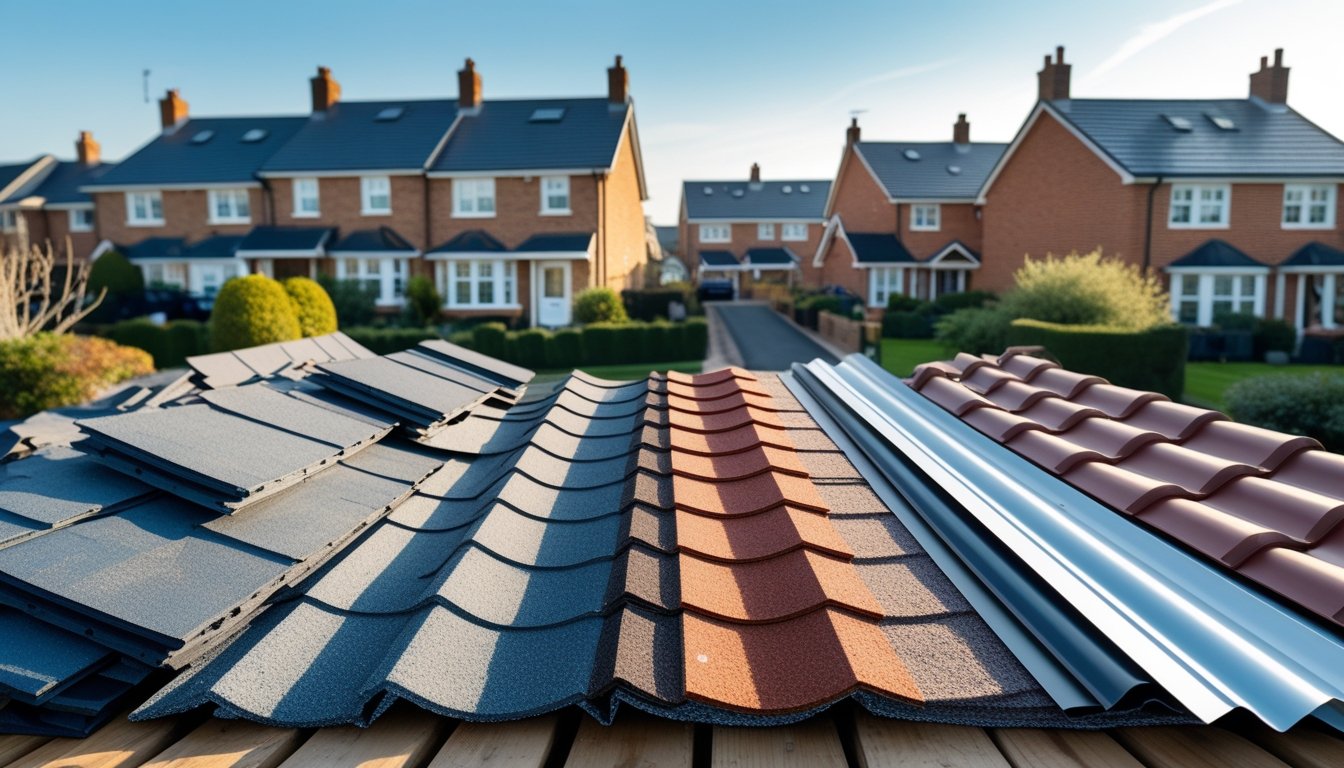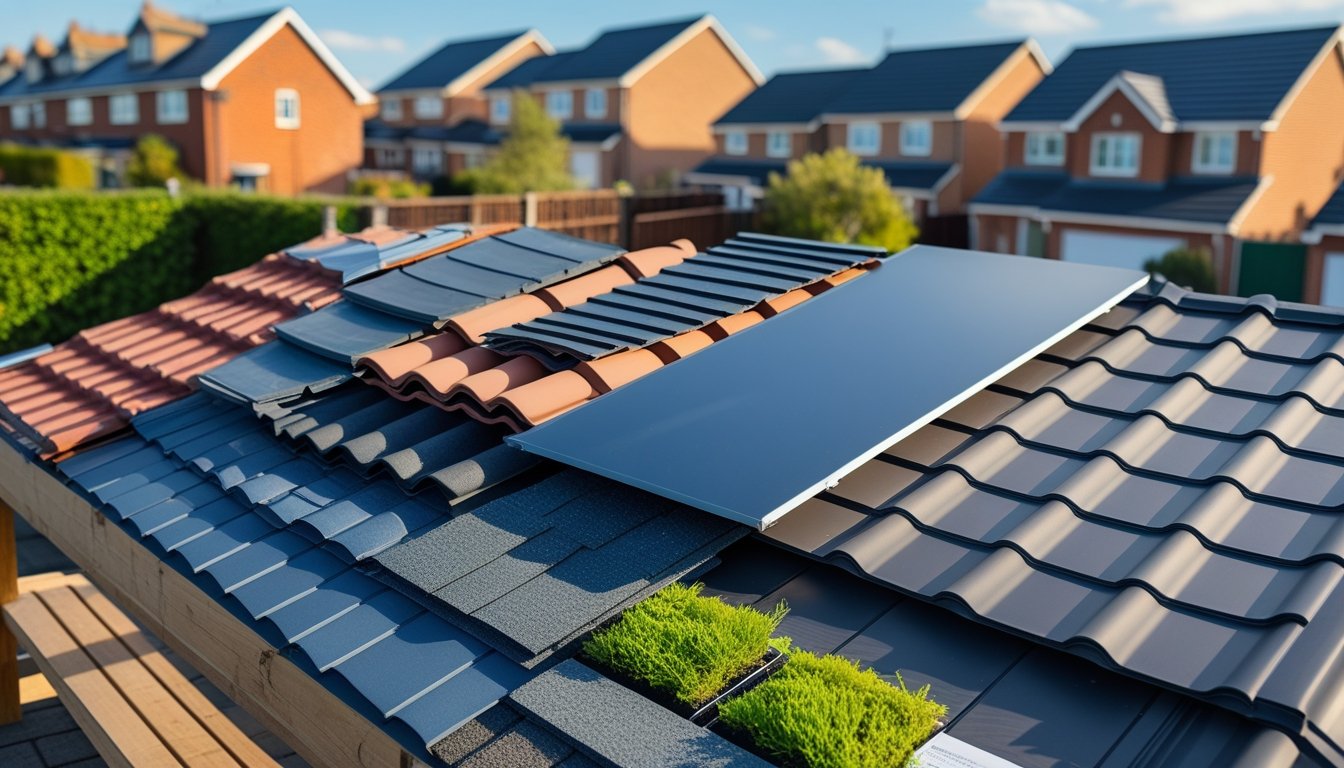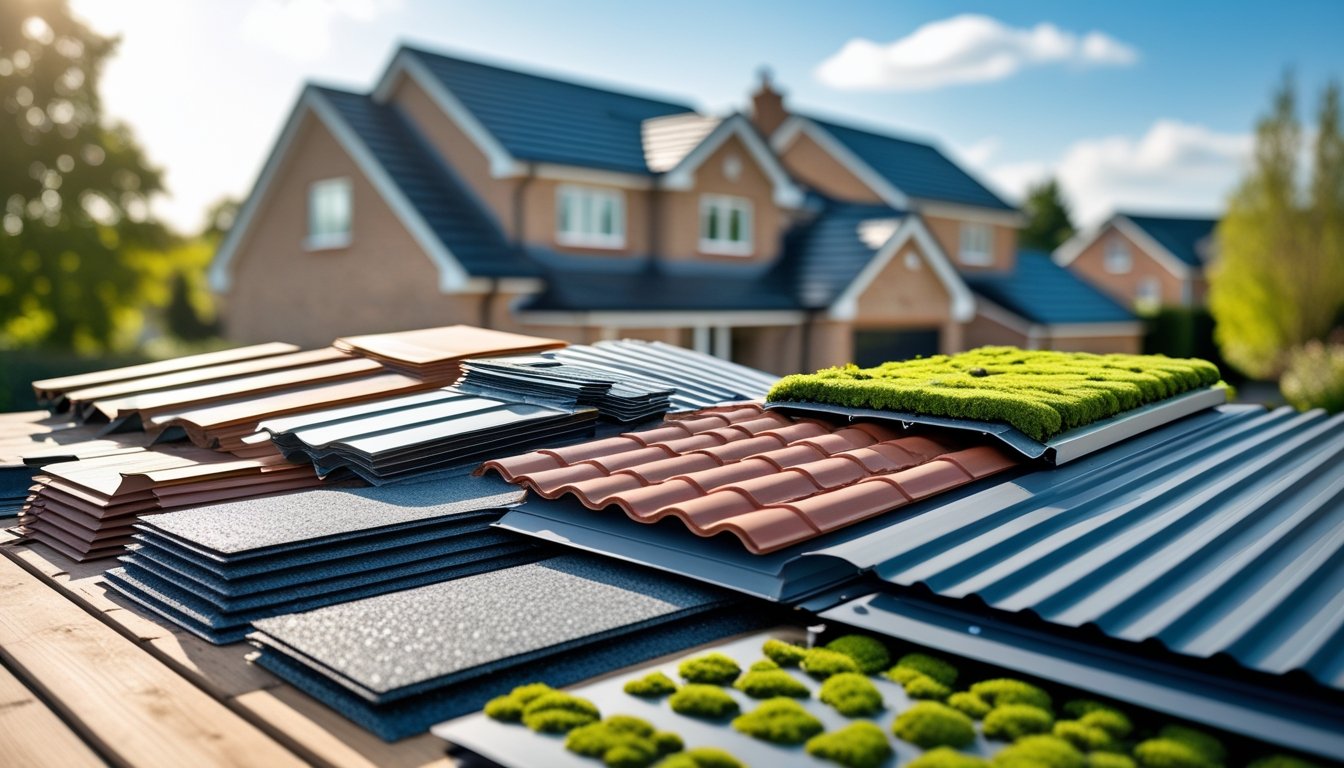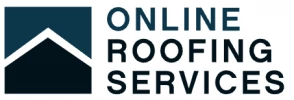Late updated: 14 Oct 2025 15:10
Written by: Oliver Bennett
Top Roofing Materials For UK Homes In 2024: A Comprehensive Guide
Selecting the right roofing material is an important decision for UK homeowners, particularly when considering unpredictable weather patterns and long-term durability. The leading choices for 2024 feature materials that blend sustainability, cost-effectiveness, and resilience against the elements. Whether you’re renovating an old home or constructing a new one, the roofing material you choose could enhance not only the appearance of your property but also its energy efficiency and market value.

From traditional clay tiles and modern metal roofing to innovative solar panels and green roofs, each material brings its own set of benefits suited to different aesthetic preferences and environmental needs. The trend towards eco-friendly materials is gaining traction, making options like solar rooftops more appealing than ever. As roofing technology continues to evolve, our choices expand, providing a myriad of possibilities to address both functional and style concerns.
Our task is not just to inform but to guide you through the top roofing materials for UK homes in 2024. By understanding the latest trends and technologies available, we hope to empower you to make decisions that align with your budget, sustainability goals, and design tastes.
Key Takeaways
- There are diverse roofing materials that cater to different needs and preferences.
- Innovative materials are becoming more prominent in UK home designs.
- Roofing choices can enhance both aesthetic and energy efficiency aspects of homes.
Top Roofing Materials For UK Homes In 2024

In 2024, UK homeowners are exploring a range of roofing materials that balance aesthetics, durability, and environmental impact. Our focus will be on metal roofing, concrete and clay tiles, and synthetic slate – all proven choices for their distinct benefits.
Metal Roofing Options
Metal roofing continues to gain traction in the UK for its long-lasting and low-maintenance qualities. Aluminium and steel are among the most popular choices, prized for their ability to withstand harsh weather conditions, including heavy rain and strong winds, commonly experienced in the UK.
One aspect we appreciate is metal roofing’s versatility in design options. From traditional styles to sleek, modern appearances, it offers a variety of finishes and colours. Additionally, metal roofs reflect rather than absorb sunlight, contributing to more energy-efficient homes by reducing cooling costs. The initial expense for metal roofing can be higher than other materials; however, its longevity and minimal upkeep often make it a cost-effective option over time.
Concrete and Clay Tiles
Concrete and clay tiles have long been staples in the UK roofing industry. They offer classic charm while meeting modern demands for durability and weather resistance. Clay tiles bring a touch of elegance with their natural terracotta hue, while concrete options can be moulded to mimic different textures and styles.
We find that clay and concrete tiles excel in durability, boasting a lifespan of 50 years or more with proper maintenance. Their natural thermal properties also help keep homes comfortable year-round. Being heavier than alternative materials, these tiles require sturdy roof structures for support. They are a great choice for those seeking a combination of timeless style and robust performance.
Synthetic Slate and Alternative Materials
Synthetic slate is becoming increasingly popular for its ability to replicate the appearance of natural slate without the high cost and weight. Made from recycled materials, synthetic slates offer an eco-friendly choice for environmentally-conscious homeowners. Their lightweight nature makes them suitable for a variety of roof structures without requiring extra support.
Additionally, synthetic slate is known for its low maintenance, resisting moss and algae growth while offering good fire resistance. Available in a range of shades and styles, these alternatives provide flexibility in achieving a desired aesthetic. While not as long-lasting as natural slate, these materials still offer a great lifespan, making them an attractive option for those looking for a balance between sustainability and visual appeal.
Innovative And Sustainable Roofing Solutions For 2024
In 2024, the demand for innovative and sustainable roofing solutions in the UK is on the rise. This focus is driven by advancements in materials and technologies that offer durability, energy efficiency, and improved aesthetic appeal. Let's look into sustainable materials, energy-efficient solar options, and the integration of green and cool roof technologies.
Sustainable Roofing Materials
The shift towards sustainable roofing materials is transforming the construction landscape. These materials include recycled metal, reclaimed slate, and timber, each offering unique environmental benefits. Recycled metal roofing is durable and reduces waste by repurposing existing materials. Reclaimed slate provides classic aesthetics with a lower carbon footprint, while timber harvested from sustainable forests supports eco-friendly practices.
The push for sustainability means these materials not only enhance aesthetic value but also contribute to reducing the overall environmental impact of roofing installations. With governmental incentives promoting eco-friendly construction, homeowners can find it financially viable to invest in sustainable options like these.
Solar Roofing And Energy-Efficient Options
Integrating solar roofing solutions is an exciting development in the pursuit of energy-efficient homes. Solar shingles and tiles are becoming more common due to their ability to generate electricity directly from sunlight. These roofing technologies convert solar energy into electricity, reducing reliance on traditional power sources and lowering energy bills.
By incorporating solar technology, we're not just improving energy efficiency but also adding a layer of sustainability. The reduction in energy consumption from the grid makes solar options an attractive choice for eco-conscious homeowners. Moreover, with advancements in photovoltaic technology, the integration is seamless, keeping aesthetics intact while offering practical benefits.
Green Roofs And Cool Roof Technologies
Green roofs offer a creative approach to urban architecture, improving insulation and reducing the urban heat island effect. These living roofs consist of vegetation layers that absorb rainwater, provide habitat for wildlife, and help regulate temperatures in densely populated areas.
Cool roof technologies employ reflective materials or coatings that minimise heat absorption, thus keeping buildings cooler in warmer months. By reflecting more sunlight than standard roofing, cool roofs decrease the need for air conditioning, making them a cost-effective solution. Combining green and cool roofing assists in enhancing urban biodiversity while also contributing to energy conservation efforts.
Frequently Asked Questions

In recent years, roofing materials have evolved to address weather durability and energy efficiency, with technological advancements and eco-friendly options gaining traction. Additionally, government incentives sometimes play a role in material choice, while the green roofing trend impacts preferences.
What are the most durable roofing materials suitable for British weather conditions in recent years?
British weather can be challenging, with heavy rains and varying temperatures. Materials like clay tiles and slate have proven durability, resisting harsh climates effectively. Metal roofing is another resilient option, known for withstanding weather extremes and offering a longer lifespan.
How do energy-efficient roofing materials compare in terms of cost and performance?
Energy-efficient materials, such as solar shingles, are initially costly but provide long-term savings on energy bills. These materials enhance insulation and reduce heating needs. Comparing cost, traditional options like asphalt shingles are cheaper upfront, but energy-efficient choices offer better performance in regulating indoor temperatures.
Can you list eco-friendly roofing options that have become popular among UK homeowners?
Homeowners increasingly prefer eco-friendly options like green roofs, solar panels, and recycled metal roofing. Green roofs offer natural insulation and stormwater management, while solar panels contribute to energy efficiency. Recycled metal roofs provide a sustainable choice without compromising durability.
What advancements in roofing technology have been adopted widely in the UK since 2024?
Recent years have seen the adoption of smart roofing technology, incorporating sensors for maintenance alerts and energy-saving features. Improved photovoltaic systems have enhanced the efficiency of solar roofs. Additionally, advanced insulation materials have become standard, contributing to better energy conservation.
Are there any government incentives for using certain types of roofing materials in the UK?
While specifics can vary by region, initiatives often support renewable energy installations. For instance, UK homeowners installing solar panels may benefit from schemes aimed at reducing renewable energy costs. These incentives encourage the adoption of sustainable materials, promoting environmental stewardship.
How has the trend of green roofing impacted the selection of roofing materials for UK homes?
The green roofing trend has led to an increase in demand for sustainable and low-impact materials. This shift influences homeowners to consider options like grass or sedum roofs, which not only enhance biodiversity but also offer energy efficiency and aesthetic appeal.
